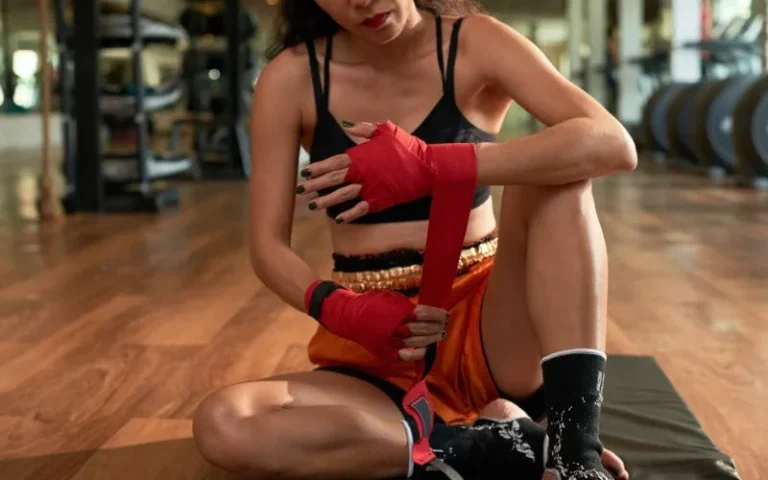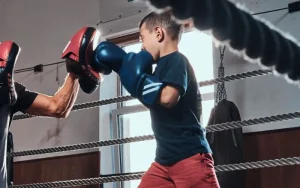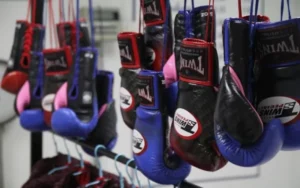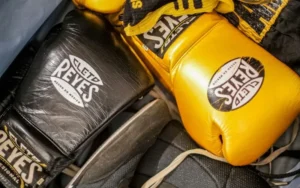Muay Thai and Kickboxing are self-defence martial arts taught in Metro Vancouver with different striking styles and unique appeals, techniques, and philosophies that have made them favorites among martial arts practitioners worldwide.
Yet, the question remains for many: between Muay Thai vs Kickboxing, which is the better martial art? And perhaps more importantly, which is better for you? Let’s dive into the key differences, uses in MMA, self-defense capabilities, and their impact on weight loss to help you decide.
Muay Thai vs Kickboxing Difference in Origin

The roots of Muay Thai and Kickboxing are steeped in the history and traditions of their respective countries, offering a glimpse into the evolution of these striking arts from ancient battlefield techniques to modern competitive sports.
Muay Thai: The Art of Eight Limbs from Thailand
Muay Thai, also known as Thai Boxing, originated in Thailand several centuries ago. It evolved from Muay Boran, an ancient style of fighting used by Siamese soldiers after losing their weapons in battle. This combat system was both a martial art and a form of physical exercise, discipline, and personal advancement.
The transition from Muay Boran to Muay Thai occurred in the 20th century, as it became a sport with structured rules, ring fights, and protective gear. The rich cultural heritage of Muay Thai is still celebrated in Thailand today, with rituals and music playing a significant role in matches.
Kickboxing: A Blend of Martial Art Styles from Various Countries
Kickboxing’s origins are more diverse, with influences from various countries and martial arts styles. It began to take shape in the 20th century, primarily as a combination of Karate and Western Boxing. American Kickboxing emerged in the 1970s, promoting fights between Karate practitioners and boxers, which led to the development of a new sport that allowed both kicking and punching.
Simultaneously, in Japan, K-1 Kickboxing was founded, incorporating styles of kickboxing from Muay Thai, Karate, Taekwondo, and other martial arts, resulting in a martial art style simply known as Kickboxing. Dutch Kickboxing also contributed to the evolution of kickboxing combat sports, known for its emphasis on heavy punches, low kicks, and aggressive fighting style.
RELATED: Are Kickboxing Classes Worth It?
Muay Thai vs Kickboxing Differences & Which is Better For You?
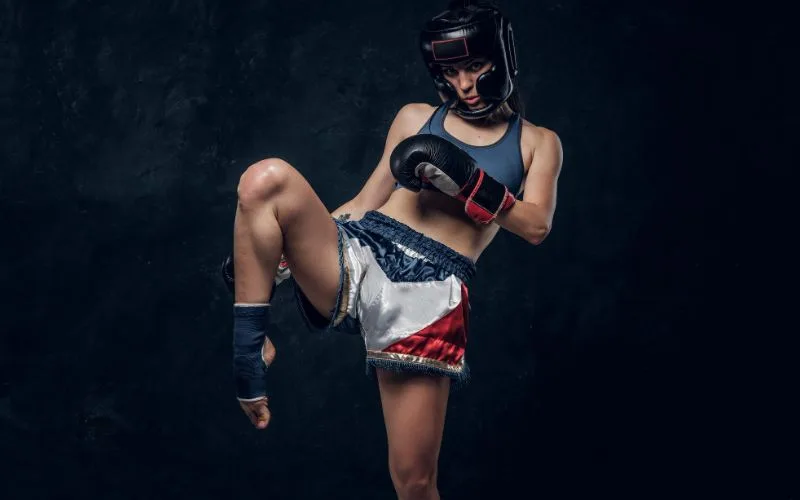
1. Is Muay Thai or Kickboxing Better for MMA?
Knowing which martial art styles to master before getting into MMA is one of the most intelligent things to think about for aspiring UFC or ONE champions.
Muay Thai
Muay Thai’s eight-point striking system, which includes clinches and the ability to strike with elbows and knees, provides a complete striking toolkit that meshes well with the grappling aspects of MMA.
Kickboxing
While Kickboxing, with its focus on foundational footwork movement, punches, kicks, and knee strikes (excluding elbows), offers powerful striking abilities and expert range control, the added dimensions of Muay Thai often give its practitioners an edge in the cage.
RELATED: Children’s Martial Arts: What to Choose
2. Muay Thai vs Kickboxing: Which is Better For Self-Defence?
For self-defence, the ability to neutralize threats quickly and efficiently is important, and whether the attacker is unarmed or not makes a huge difference. In both situations however, avoiding a fight (if possible) and getting away with your life is much more valuable than engaging in a fight.
Muay Thai
Muay Thai’s inclusion of elbow strikes and knee strikes, alongside its clinch work, offers more options for close-quarters defense, making it slightly superior in unarmed self-defense situations.
Kickboxing
Kickboxing, on the other hand, is much more practical against knife-attackers. It teaches effective head movement, fluid footwork, and powerful strikes from afar that can be invaluable in stand-up confrontations. The focus in footwork, maintaining distance, and range control makes Kickboxing superior against a knife attacker vs Muay Thai, which focuses on getting aggressively up-close and personal. Although, it’s best to run away if possible, as any damage from a knife could be fatal.
3. Muay Thai vs Kickboxing Common Differences Between Rules
The rules of Muay Thai and Kickboxing matches highlight some of their biggest differences. These differences in rules can significantly affect training focus and fighting style.
Muay Thai
Muay Thai competitions allow the use of elbows and knees, clinching, and even throws to an extent, reflecting its comprehensive striking and grappling approach.
Kickboxing
Kickboxing rules vary by organization but generally kickboxing competitions limit the use of knees, restrict clinching, and focus more on punches and kicks.
RELATED: Is Kickboxing a Good Sport for Kids?
4. Muay Thai vs Kickboxing Stance Differences
Muay Thai
Muay Thai fighters adopt a stance that facilitates mobility for both offensive and defensive movements, including the use of all eight limbs. This stance is often more upright, allowing for effective clinch work and defense against leg kicks.
Kickboxing
Kickboxing fight stances tend to be more side-on, emphasizing agility, range, and the ability to deliver powerful punches and kicks, drawing influences from western boxing and other stand-up fighting styles.
5. Muay Thai vs Kickboxing for Weight Loss
Both Muay Thai and Kickboxing are high-intensity workouts that can burn a significant number of calories, making them excellent options for weight loss. The choice between them might come down to personal preference for the types of movements and the variety of techniques used.
Muay Thai
Muay Thai, with its wide range of strikes and clinch work, may provide a slightly more comprehensive full-body workout.
Kickboxing
However, the fast pace, focus on footwork, and dynamic movements of Kickboxing are also highly effective for burning fat and building muscle.
RELATED: How Much Are Kickboxing Classes?
Muay Thai & Kickboxing Self-Defence Training Classes in Metro Vancouver, BC
Art of Kickboxing offers both beginner Muay Thai and kickboxing self-defence training classes in Richmond BC; Metro Vancouver. Deciding whether to take Muay Thai or Kickboxing classes depends largely on your personal goals, interests, and what you’re looking to get out of martial arts training.
If you’re drawn to a martial art that offers a wide variety of techniques and is highly effective in self-defence situations, Muay Thai might be the choice for you. On the other hand, if you prefer a sport with a strong focus on punching and kicking with an emphasis on agility and speed, Kickboxing could be more your style.

